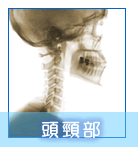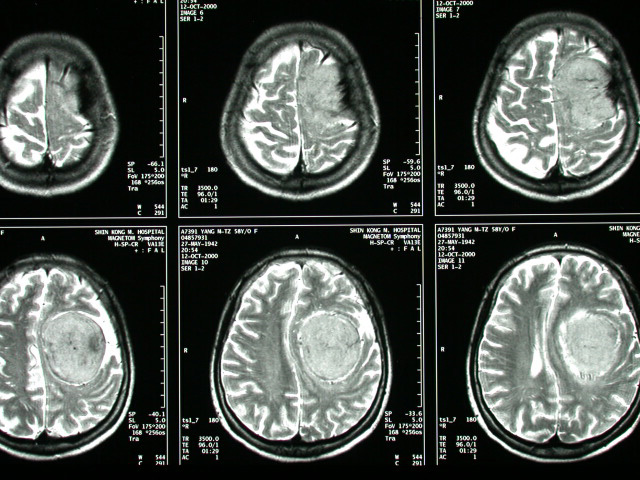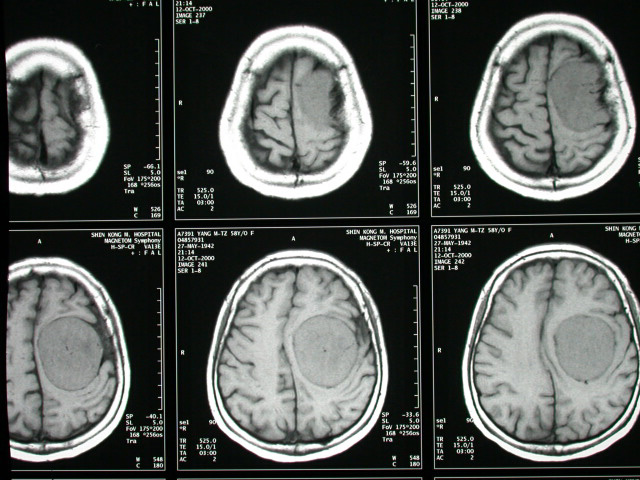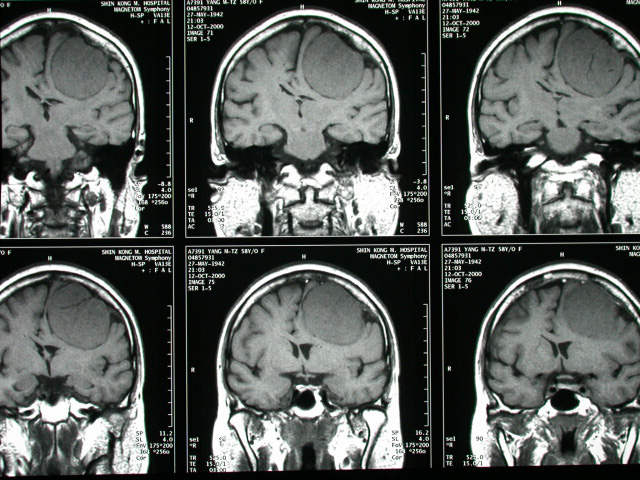History :
This 59 y/o lady suffered from late onset seizure general weakness.
Salivation from L't oral base for 1MT.
Image finding :
-An about 6cm tumor at L't high convexity with mass effect & R't
midline shifting.
-The tumor is extra-axial in location with a pedicle at inner table
of the L't frontal bone.
-Tubular shaped flow-void SI is noted in tumor indicating hypervascularity
of this tumor
.
Diagnosis :
Meningioma, L't high convexity.
Discussion :
MENINGIOMA
Incidence:
-most common extra-axial
-15-18% of intracranial tumors in adults;
-1-2% of primary brain tumors in children;
-33% of all incidental intracranial neoplasms
Age:
-peak incidence 45 years (range 35-70 years);
-rare <20 years (in children >50% malignant, M > F);
-M:F = 1:2 to 1:4
Location:
-(a)convexity = lateral hemisphere (20-34%)
-(b)parasagittal = medial hemisphere (18-22%) -falcine meningioma
(5%) below superior sagittal sinus, usually extending to both sides
-(c)sphenoid ridge + middle cranial fossa
-(d)frontobasal (10%)
-(e)posterior fossa (9-15%)
-cerebellar convexity (5%)
-tentorium cerebelli (2-4%)
-cerebellopontine angle (2-4%)
-clivus (<1%) (f)spine (12%)
Atypical
-angle (<5%)
-(b)optic nerve sheath
-(c)intraventricular (2-5%): 80% in lateral (L > R), 15% in 3rd,
5% in 4th ventricle; from infolding of meningeal tissue during formation
of choroid plexus Most common trigonal intraventricular mass in
-(d)ectopic = extradural (<1%): intradiploic space, outer table
of skull, scalp, paranasal sinus, parotid gland, parapharyngeal
space, mediastinum, lung, adrenal gland
MR (100% detection rate with gadolinium
-hypo- to isointense on T1WI + iso- to hyperintense on T2WI (intensity
depends on amount of cellularity versus collagen
-homogeneous / heterogeneous texture (tumor vascularity, cystic
changes, calcifications)
-arcuate bowing of white matter + cortical effacement
-tumor-brain interface of low-intensity vessels + high-intensity
cerebrospinal cleft on T2WI
-contrast enhancement for 3-60 minutes on T1WI as high as 148% over
brain
-"dural tail" sign = curvilinear area of enhancement tapering
off from the margin of tumor along dural surface in 60% (= dural
tumor infiltration / reactive hypervascularity / reactive hyperplastic
changes)
|




